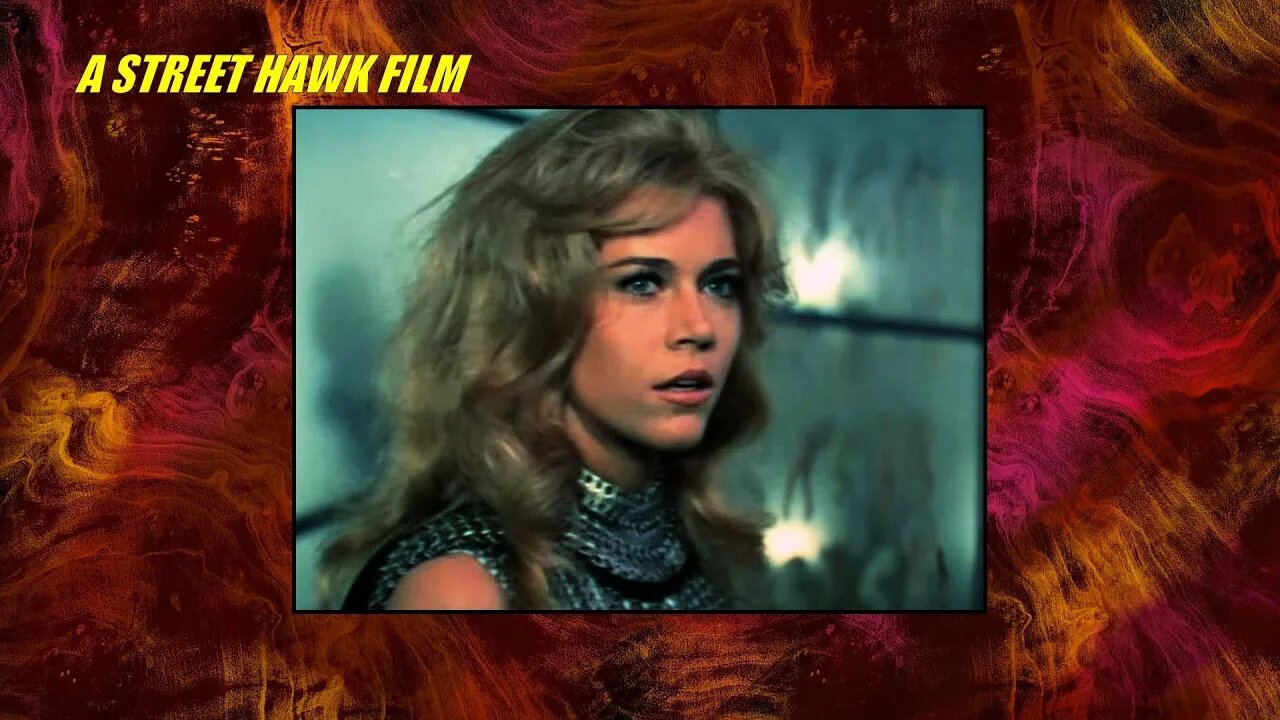Premium Only Content

Barbarella (1968) - A Psychedelic Space Odyssey
Barbarella (1968) - A Psychedelic Space Odyssey
Introduction
"Barbarella," directed by Roger Vadim and released in 1968, is a film that encapsulates the spirit of the late 1960s, a time of cultural upheaval, and experimentation. This science fiction film, based on the French comic book series of the same name created by Jean-Claude Forest, offers a unique blend of campy humor, eroticism, and surreal visuals. "Barbarella" stands as a distinctive and iconic piece of cinematic history. In this essay, we will explore the key elements that make "Barbarella" a notable and often controversial entry in the realm of science fiction cinema.
A Surreal Sci-Fi Universe
"Barbarella" is set in the distant future and presents a world that is a far cry from the conventional, gritty, and dystopian settings often associated with science fiction. Instead, the film immerses viewers in a surreal and colorful universe where space travel is an everyday occurrence, and technology exists alongside a fantastical aesthetic. The production design, costumes, and set pieces contribute to the creation of a whimsical and dreamlike atmosphere.
The Adventures of Barbarella
The film follows the adventures of its eponymous heroine, Barbarella, played by Jane Fonda. Barbarella is an astronaut and a "government agent" tasked with locating a missing scientist named Durand-Durand (played by Milo O'Shea). As she embarks on her mission, Barbarella encounters various bizarre and eccentric characters, navigates peculiar landscapes, and faces off against unusual threats. Her journey takes her through a series of increasingly absurd and surreal situations that test her resourcefulness and adaptability.
Sexual Liberation and Eroticism
"Barbarella" is perhaps best known for its open exploration of sexuality and eroticism. The film's depiction of Barbarella's uninhibited and often comical encounters with other characters challenges traditional sexual mores. This aspect of the film reflects the spirit of sexual liberation that characterized the 1960s, as well as its willingness to confront societal taboos and norms. It's important to note that the film's portrayal of sexuality was considered groundbreaking and controversial for its time.
Campy Humor and Satire
"Barbarella" also embraces a campy sense of humor and satire. The film's over-the-top performances, outlandish scenarios, and tongue-in-cheek dialogue create a unique tone that oscillates between comedy and surrealism. It playfully pokes fun at the conventions of the science fiction genre and offers a satirical commentary on the era's cultural and political climate.
Legacy and Influence
While "Barbarella" received mixed reviews upon its release, it has since gained a cult following and is celebrated for its audacity and uniqueness. The film's impact on popular culture can be seen in various works that pay homage to its aesthetic and themes. It remains a point of reference for filmmakers and artists who seek to blend science fiction with elements of camp, eroticism, and satire.
Conclusion
"Barbarella" (1968) is a film that defies easy categorization. It is a product of its time, reflecting the countercultural spirit and experimentation of the late 1960s. Its surreal visuals, uninhibited exploration of sexuality, and campy humor make it a distinctive and memorable entry in the science fiction genre. While "Barbarella" may not have achieved widespread critical acclaim upon its release, it has left an indelible mark on cinematic history and continues to be celebrated for its audacious and unapologetic embrace of the unconventional.
-
 43:48
43:48
The Kevin Trudeau Show
10 hours agoHow I Manage My Time (And Get 10x More Done)
2134 -
 LIVE
LIVE
The Jimmy Dore Show
2 hours agoTrump BLASTS ABC Over Biden Coverup! Senator Calls Jews “Masters of the Universe!” w/Dane Wigington
11,174 watching -
 1:24:31
1:24:31
Kim Iversen
4 hours agoPutin's ONLY Option To End The War Is TOTAL TAKEOVER Of Ukraine | Scott Horton
37.1K26 -
 LIVE
LIVE
Quite Frankly
7 hours ago"Atlantis, Open Lines, RFK & Geo-Engineering" ft The Observation Lounge 4/30/25
879 watching -
 55:02
55:02
LFA TV
23 hours agoFifty Years of Military Failures | TRUMPET DAILY 4.30.25 7PM
5.49K -
 1:32:47
1:32:47
2 MIKES LIVE
3 hours ago2 MIKES LIVE #211 News Breakdown Wednesday!
2.82K -
 LIVE
LIVE
Dr Disrespect
9 hours ago🔴LIVE - DR DISRESPECT - WARZONE NUKE - WILL IT EXPLODE?
1,490 watching -
 2:28:01
2:28:01
Barry Cunningham
5 hours agoWATCH LIVE: PRESIDENT TRUMP SPEECH ON INVESTING IN AMERICA!
37.3K8 -

StoneMountain64
7 hours ago1st stream BACK! Arc Raiders BRAND new exclusive alpha early look
67.4K1 -
 20:09
20:09
Exploring With Nug
10 hours ago $0.82 earnedVanished After Driving Away… I Spent the Day Searching Lakes
16.5K